Other Compatible Accessories
A variety of accessories are available for your Nikon camera.
- Availability may vary with country or region.
- See our website or brochures for the latest information.
- Power Sources
EN‑EL15c Rechargeable Li-ion Battery: EN‑EL15c batteries can be used with Nikon Z f digital cameras.
- EN‑EL15b and EN‑EL15a batteries can also be used. Note, however, that fewer pictures can be taken on a single charge than with the EN‑EL15c (0 Battery Endurance).
- MH‑25a Battery Charger: The MH‑25a can be used to recharge EN‑EL15c batteries.
MH‑34 Battery Charger: The MH‑34 can be used to recharge EN‑EL15c batteries. Charge batteries by connecting an EH‑8P AC adapter.
- Connecting to the EH‑8P requires the supplied USB cable (featuring Type-C connectors at both ends).
EH‑7P Charging AC Adapter/EH-8P AC Adapter: When connected to the camera via USB, these adapters can be used to charge batteries inserted in the camera.
- The battery will not charge while the camera is on.
- The EH‑8P and EH-7P cannot be used to charge EN‑EL15a batteries.
- The EH‑8P and EH-7P can be used to power the camera; to do so, select [ON] for [USB power delivery] in the setup menu. For more information, see “USB Power Delivery” (0 USB Power Delivery).
- Connections for power supply or battery charging using the EH-8P must be made via the supplied USB cable (featuring Type-C connectors at both ends).
- Filters
- Neutral Color (NC) filters can be used to protect the lens.
- Filters may cause ghosting when the subject is framed against a bright light, or when a bright light source is in the frame. Filters can be removed if ghosting occurs.
- Matrix metering may not produce the desired results with filters with exposure factors (filter factors) over 1× (Y44, Y48, Y52, O56, R60, X0, X1, C‑PL, ND2S, ND4, ND4S, ND8, ND8S, ND400, A2, A12, B2, B8, B12). We suggest that [Center-weighted metering] be selected instead. See the documentation provided with the filter for details.
- Filters intended for special-effects photography may interfere with autofocus or the in-focus indicator (I).
- USB Cables
- UC-E24 USB Cable: A USB cable with a Type-C connector for connection to the camera and a Type A connector for connection to the USB device.
- UC-E25 USB Cable: A USB cable with Type-C connectors at both ends.
- Sync Terminal Adapters
- AS‑15 Sync Terminal Adapter: An adapter for the accessory shoe that allows studio flash equipment and the like to be connected via a sync terminal.
- Accessory Shoe Covers
- BS-1 Accessory Shoe Cover: A cover protecting the accessory shoe when no flash unit is attached.
- Body Caps
- BF-N1 Body Cap: The body cap prevents dust entering the camera when no lens is in place.
- Viewfinder Eyepiece Accessories
DK-33 Rubber Eyecup: A rubber eyecup that comes fitted to the camera. It can be removed by holding the eyepiece release (q) and rotating the eyecup in the direction shown (w).
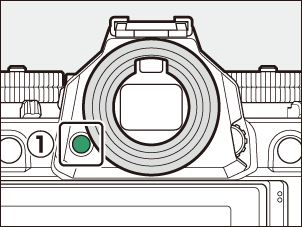
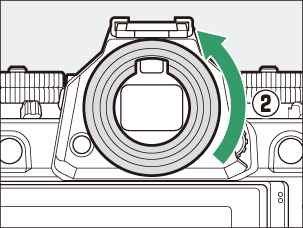
To re-attach the eyecup, align the mark on the rear of the eyecup (r) with the mark on the camera body (e) and rotate the eyecup as shown until it clicks into place (t).
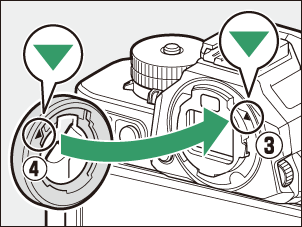

- Flash Units
SB-5000, SB-910, SB-900, SB-800, SB-700, SB-600, SB-500, SB-400, and SB-300 Speedlights: These units can be mounted on the camera for flash photography. Some also support wireless remote control for off-camera flash photography with multiple flash units.
- See the documentation supplied with each Speedlight for information on mounting the unit on the camera.
- For more information on flash photography, see “Using an On-Camera Flash” (0 Using an On-Camera Flash), “What Is Remote Flash Photography?” (0 What Is Remote Flash Photography?), and “Compatible Flash Units” (0 Compatible Flash Units).
- SB‑R200 Wireless Remote Speedlight: A flash unit for wireless remote flash photography.
- SU-800 Wireless Speedlight Commander: A wireless commander for use with SB-5000, SB-910, SB-900, SB-800, SB-700, SB-600, SB-500, and SB-R200 flash units. Flash units can be divided into up to three groups for remote flash control. The SU‑800 itself is not equipped with a flash.
- Mount Adapters
FTZ II/FTZ Mount Adapter: An adapter that allows NIKKOR F mount lenses to be used with digital cameras that support interchangeable Z mount lenses.
For information on attaching, removing, maintaining, and using mount adapters, refer to the product documentation.
Update to the latest version of the mount adapter firmware if so prompted after attaching the adapter. Information on performing firmware updates is available via the Nikon website for your country or region.
- Microphones
- ME-1 Stereo Microphone: Connect the ME-1 to the camera microphone jack to record stereo sound. Using an external microphone also reduces the chance of picking up equipment noise, such as the sounds produced during video recording when focus is achieved using autofocus.
- ME-W1 Wireless Microphone: A wireless Bluetooth microphone. Use the ME‑W1 for off-camera recording.
- Remote Controls
- ML‑L7 Remote Control: Pair the ML‑L7 with the camera for remote photography and video recording.
- Remote Grips
- MC-N10 Remote Grip: When connected to the camera, the MC-N10 can be used for such tasks as video recording, photography, and adjusting camera settings. It comes equipped with a rosette for attachment to third-party camera equipment. With the MC-N10 mounted on third-party camera equipment via an ARRI-compatible rosette adapter, you can keep moving subjects in focus while panning the camera to track their motion, or use its conveniently-placed controls to adjust settings such as exposure and white balance without touching the camera.
Compatible batteries can be charged using the devices below.
| Battery | MH‑25a battery charger | EH‑7P charging AC adapter/ EH‑8P AC adapter |
|---|---|---|
| EN‑EL15c | 4 | 4 |
| EN‑EL15b | 4 | 4 |
| EN‑EL15a | 4 | — |
Attaching and Removing the Accessory Shoe Cover
The BS-1 accessory shoe cover slides into the shoe as shown. To remove the cover, hold the camera firmly, press the cover down with a thumb and slide it in the direction shown.
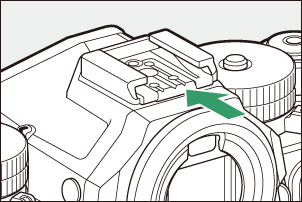
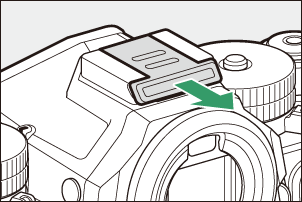
Charging the Battery with an Optional MH-34 Battery Charger
Connect the optional EH-8P AC adapter to the MH-34 battery charger with the supplied USB cable featuring Type-C connectors at both ends and plug the AC adapter into a household power outlet. You can then insert the battery into the charger to begin charging.
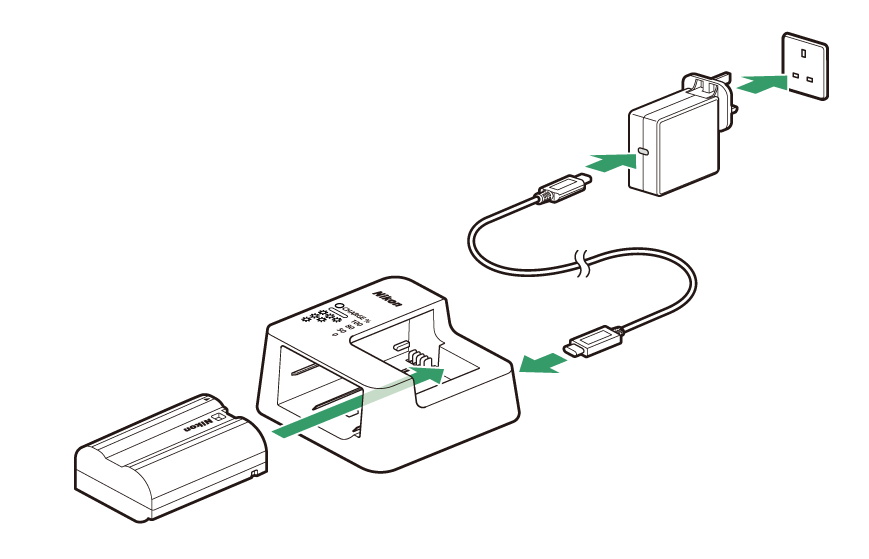
- Choose a location where the charger will remain stable and free from vibration during use.
- An exhausted EN-EL15c battery will fully charge in about 2 hours and 30 minutes, and an EN-EL15b battery will charge in about 2 hours and 50 minutes.
- The “CHARGE %” lamp flashes while charging and turns on after charging is complete.
- There may be a delay of about five seconds before the lamp starts flashing.

Battery status is shown by the “CHARGE %” lamp:
“CHARGE %” lamp Status Flashes once and turns off, in repetition Charging (less than 50% charged) Flashes twice and turns off, in repetition Charging (50% charged) Flashes three times and turns off, in repetition Charging (80% charged) Turns on Charging complete
Caution: Charging EN-EL15a/EN-EL15 Batteries
EN-EL15a and EN-EL15 rechargeable Li-ion batteries are not compatible with MH-34 battery chargers. Be sure to use an MH‑25a battery charger when charging these batteries via a charger.
If the “CHARGE %” Lamp Flashes Rapidly
If the “CHARGE %” lamp on the charger flashes rapidly (8 times a second):
- The battery is not inserted correctly: Unplug the charger and remove and reinsert the battery.
- The ambient temperature is too hot or too cold: Use the battery charger at temperatures within the designated temperature range (0–40 °C/+32–104 °F).
If the problem persists, unplug the charger and end charging. Bring the battery and charger to a Nikon-authorized service representative.
ML‑L7 Remote Controls
When paired with the camera via Bluetooth, optional ML‑L7 remote controls can be used to control the camera remotely during still photography, video recording, and the like.
- The ML‑L7 remote control must be paired with the camera before use.
- The camera can be paired with only one remote at a time. If paired successively with more than one remote, the camera will respond only to the remote with which it was last paired.
- In addition to the present document, you will also need to consult the documentation for the ML‑L7 remote control.
Cautions: Using Remote Controls
- Remote controls cannot be used when:
- [ON] is selected for [Airplane mode] in the network menu,
- [iPhone] is selected for [USB] in the network menu, or
- while the camera is connected to and exchanging data with another device via USB.
- The camera cannot connect to a remote control while connected to another device via Bluetooth or Wi-Fi or vice versa.
Parts of the ML‑L7 Remote Control: Names and Functions
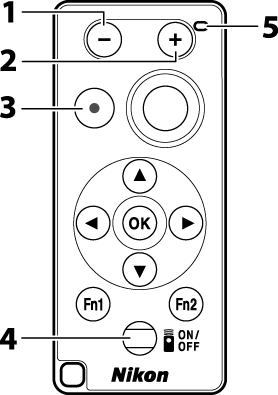
| Control | Function | |
|---|---|---|
| 1 | “−” button | Performs the same function as the camera W (Q) button. |
| 2 | “+” button | Performs the same function as the camera X button. |
| 3 | Video record button | Press once to start video recording and again to stop. |
| 4 | Power button |
|
| 5 | Status lamp | The color and behavior of the status lamp indicates remote control and shooting status (0 “The Remote Control Status Lamp (Z f)”). |
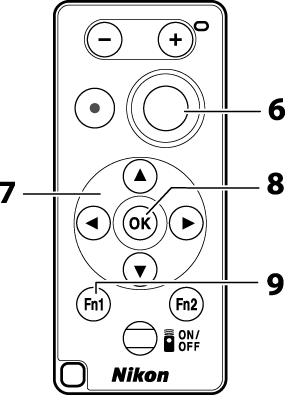
| Control | Function | |
|---|---|---|
| 6 | Shutter-release button | Press the button to release the shutter.
|
| 7 | Multi selector | Performs the same function as the multi selector on the camera. |
| 8 | J (select) button | Performs the same function as the J button on the camera. |
| 9 | Fn1 (Function 1)/Fn2 (Function 2) buttons | Perform the roles assigned via the network menu using [Wireless remote (ML-L7) options] > [Assign Fn1 button] and [Assign Fn2 button].
|
The Remote Control Status Lamp (Z f)
| Color | Behavior | Status |
|---|---|---|
| Green | Flashes approximately once a second | Searching for paired camera. |
| Green | Flashes quickly (approximately twice a second) | Pairing. |
| Green | Flashes approximately once every three seconds | Connected to camera. |
| Orange | Flashes once | Photography started. |
| Orange | Flashes twice | “Bulb” or “Time” photography ended. |
| Red | Flashes once | Video recording started. |
| Red | Flashes twice | Video recording ended. |
Adjusting Focus from the Camera
The shutter-release button on the remote control cannot be pressed halfway; to focus before shooting, press the camera shutter-release button halfway, lock focus, and only then press the shutter-release button on the remote control. To allow focus to be locked by pressing the camera shutter-release button halfway, you will need to adjust camera settings as described below.
- To enable focus lock when AF‑S is selected for focus mode, choose [Focus] for Custom Setting a2 [AF‑S priority selection].
- To enable focus lock when AF‑C is selected for focus mode, choose [Focus] or [Focus + release] for Custom Setting a1 [AF‑C priority selection].
To reactivate the camera after the standby timer has expired and the monitor and viewfinder have turned off, turn the remote control on and press and hold its shutter-release or video-record button.
Connecting for the First Time (Pairing)
The remote control must be paired with the camera before use.
Go to [Wireless remote (ML‑L7) options] in the camera network menu, highlight [Save wireless remote controller], and press J.
- The camera will enter pairing mode.
- Any existing wireless connection to a smart device or computer will end.
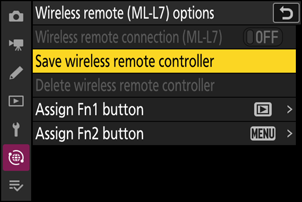
Keep the power button on the remote control pressed for over three seconds.
- The camera and remote control will begin pairing. During pairing, the status lamp on the remote control will flash about twice a second.
- A connection will be established between the camera and remote control when pairing is complete.
W and Z will appear in the shooting display.
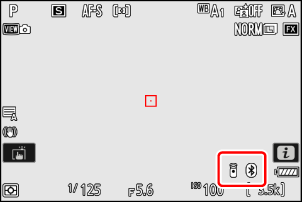
- If a message is displayed stating that pairing has failed, repeat the pairing process from Step 1.
Connecting to a Paired Remote
Go to [Wireless remote (ML‑L7) options] in the camera network menu and select [ON] for [Wireless remote connection (ML-L7)].
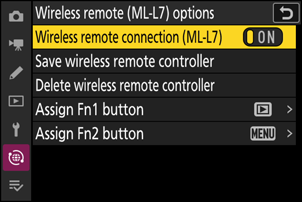
Press the remote control power button.
The camera and remote will connect automatically.
